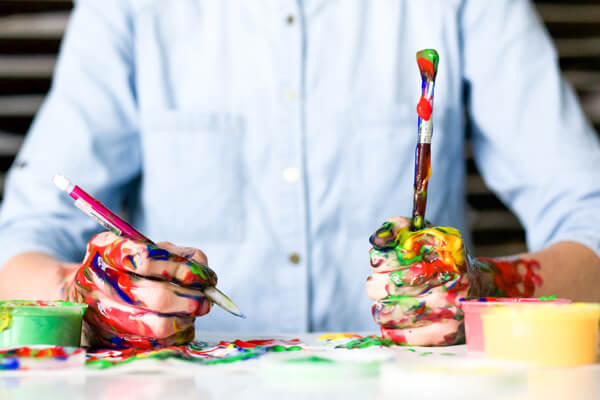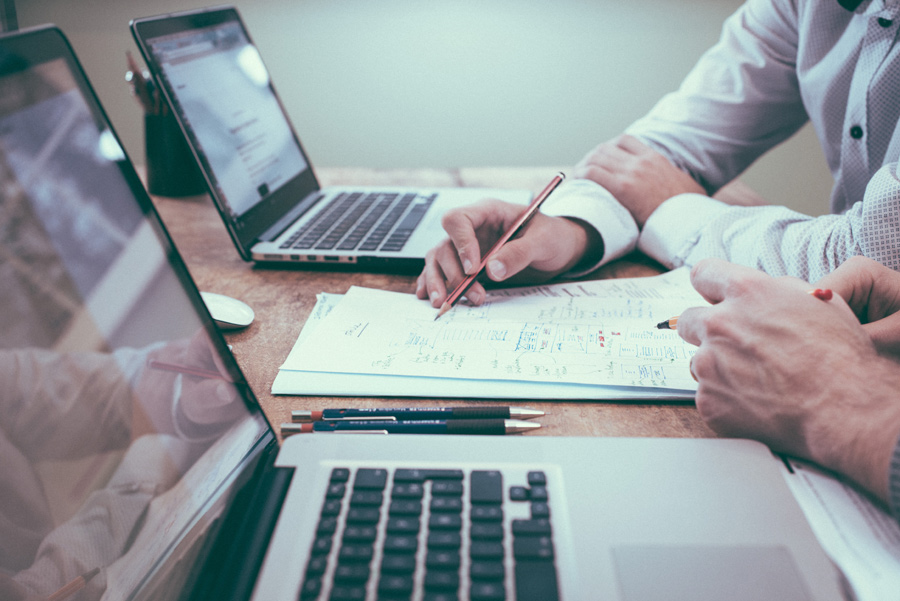
How to apply creativity into everyday life
Nov 2022
‘Our mind is creative, clever and wild. It constantly assesses risks, possibilities, needs, fears and our own power, often without us noticing… [creativity] transforms what would be monochrome thoughts into stark technicolour.’ (Anna Mathur, 2020)
What is creativity?
If you like art, music, photography or design you might have been labelled as a ‘creative’ person at some point. Or perhaps you’ve been in the opposite position and have been discouraged to study a ‘creative’ subject at University, in favour of something more academic or technical that ‘suits you’ better? But here’s the big reveal: Creativity, or creative thinking is a natural human approach to problem solving that we can ALL do (with a little training). When you’re being creative you might reveal hidden patterns or make connections between seemingly separate things - or come up with new, sometimes innovative, ideas. Creativity is quite a difficult subject to define succinctly. There are lots of different strands to it. Mihaly Csikszentmihalyi, the author of the book “Creativity: The Psychology of Discovery and Invention” gives a pretty hefty definition of the word. He says; “Creativity is a central source of meaning in our lives… [and] when we are involved in it, we feel that we are living more fully than during the rest of life” (Mihaly Csikszentmihalyi, 2013)So, can we all be creative?
It’s often suggested that ‘everyone is born creative’ (The Guardian) but that as we work our way through society and the ebbs and flows of life, we can somehow lose elements of our own creativity. Taking risks and having the freedom to explore new ideas can feel daunting the more we fear making mistakes. Children don’t worry about making mistakes - it’s part of how they learn. A baby doesn’t learn to walk without bruising their knees or bumping their head - they get back up and try again. Making mistakes is part of being human and it shouldn’t be feared in the creative process. Research proves that non-creative behaviour is learned overtime. According to George Land’s Creativity Test, young children are creative geniuses and become less creative as they age. His study took a group of 1,600 five-year-olds and tested to see how creative they were. 98% were deemed creative geniuses, thinking in novel ways similar to the likes of Mozart and Einstein… He gave the same test to 280,000 adults and found that only 2% were creative geniuses. (adapted from Creative Live, 2018)
Top 3 tips for boosting your creativity
Start off with a creative attitude
If you believe you can’t be creative, you're already limiting how creative you can be. Remember, creative thinking isn’t just for the confines of fashion and the arts. Creative thinking is happening right now in the fields of science, engineering, teaching, government and many more. Believe in possibilities and already the opportunity for creativity opens up.Get some tools, learn techniques
The most simple tool for being creative is a large piece of blank paper. Scribble ideas until your heart's content. You can then put your scribbled ideas into a more orderly format by drawing a mind map. Tony Buzzan was one of the innovators of mind maps and creative tools, so do read more about his ideas here: https://tonybuzan.com/about-us Another way of thinking about creativity is Lateral Thinking, which, as it sounds, encourages the approach of thinking laterally, or across subjects. An example of this might be where a profession like teaching would look laterally across at other professions, such as science, the armed forces or government, researching their approaches and methods, then drawing ideas and strategies back into the world of teaching. Edward de Bono was a Maltese psychologist, author and inventor who originated the term Lateral Thinking. He wrote many books on thinking including Six Thinking Hats and was a proponent of the teaching of thinking as a subject in schools.Don’t be afraid to ask for feedback
Are you on the right track with a new idea? Have you hit a creative block? Asking trusted friends and colleagues for feedback is a productive way of honing your ideas and making sure you’re on track. Sometimes having a conversation with someone, even informally whilst making a coffee in a breakout space, can re-spark your creativity. Don’t be afraid to ask for feedback and respond to it - even if perhaps you get some constructive criticism along the way.Make time for creativity
It’s difficult to spark creativity when you’re feeling stressed or under a tight deadline. Therefore, allow time to be creative. Take a break from the bombardment of being always online, always accessible and always waiting for the next job to ping into your inbox. Time out is a great incubation period for creativity to flourish. Check out a useful TED talk from Stephen Kotler in 2021, which explores science-based strategies to improve creativity. Here’s a great point (amongst many others) that resonated with us;‘Daydreaming switches on the default mode network, enabling our subconscious to find remote associations between ideas… [it gives us a] little distance from our problems. That allows us to see things from multiple perspectives, to consider another’s point of view. If we don’t have the time to get that space from our emotions and take a break from the world, then we won’t have the luxury of alternative possibilities for creativity’ (Kotler, 2021)
How can I spark my creativity?
Remember, don’t think of creativity as something that you have to ‘do’. Instead seek ways to allow creativity to weave itself into your everyday life. And use some tools and techniques that are proven to help. ‘Creativity is the most powerful competitive advantage a business can have’ (The Guardian). Maybe dust off your walking shoes, go for a run, breathe in the fresh air - leave your phone at home and look up at the World around you. Allow yourself a tiny bit of headspace. Daydream - you might just surprise yourself!‘It turns out that creativity isn’t some rare gift to be enjoyed by the lucky few - it’s a natural part of human thinking and behaviour. In too many of us, it gets blocked. But it can be unblocked. And unblocking that creative spark can have far-reaching implications for yourself, your organisation and your community’ (Kelley, D. and Kelley, T. 2015)
Creativity in a creative workspace
Research shows that to boost your creativity, working in a collaborative CoWorking environment can be really beneficial. Being able to bounce ideas off other people, ask for feedback and discuss ideas can be a great source of inspiration. A CoWorking office space, like Collaborate, allows you to be in an environment where you work alongside people from all different business backgrounds with a variety of skills, so the opportunities to support each other's creative process are (potentially) endless!Our top 4 book recommendations for you
‘Creativity’ John Cleese, 2022 ‘Creativity: The Psychology of Discovery and Invention’ Dr Mihaly Csikszentmihalyi, 2013 ‘Creative Confidence: Unleashing the Creative Potential within Us All’ David Kelley and Tom Kelley, 2015 ‘Failed It: How to turn Mistakes into Ideas and other advice for successfully screwing up’ Erik Kessels, 2016This article was brought to you by Collaborate as part of our Better Working series. Collaborate is an independent business centre in central Woking, offering Serviced Offices, Coworking Desks, Meeting Rooms and Virtual Office services. If you’d like to provide some feedback or get in touch, feel free to Contact us.